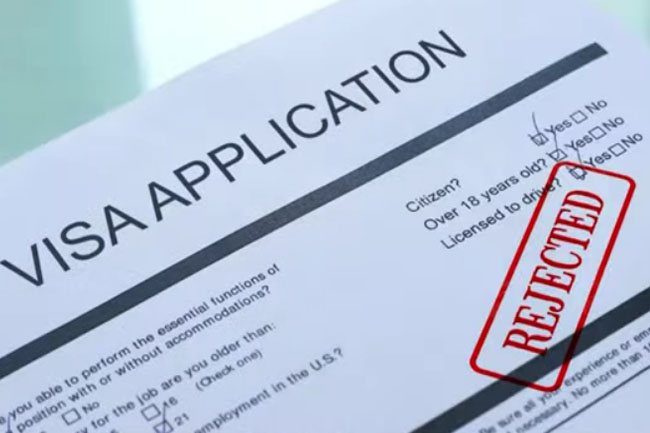The current boom in international students may end abruptly and in tears, writes Dr Abul Rizvi.
AUSTRALIA HAS three times previously (1985-1989; 2006-2008 and 2016-2019) seen a boom in overseas students like the one we are currently experiencing. In each instance, things ended abruptly and in tears.
In each instance, the problem was:
- Education and business lobbyists pressing government to loosen student visa policy;
- Greedy education providers and agents pushing students with limited financial capacity (and sometimes limited English) to Australia who then struggle to acquire qualifications of sufficient merit that provide them with a pathway to a skilled job and permanent residence;
- Students with little incentive to leave Australia after having spent a fortune on various fees and charges (often paid for with borrowed money); and
- A suddenly weaker labour market that made it difficult for students without financial backing from their parents to survive.
In essence, Australia ended up with a large group of students who were in "immigration limbo". In each instance, policy changes had to be found to provide these students with a creative pathway to permanent residence whilst student visa policy was severely tightened leaving many education providers, particularly private providers, in financial difficulties.
Commonwealth and state governments promised they had learned the lessons and would never make the same mistakes again, but memories are short.
Are we again headed the same way, especially as we have recently seen the Prime Minister and state premiers pushing to accelerate student numbers even faster, urged on by the usual education lobby suspects as well as business lobby groups keen to access cheap student labour?
As soon as the labour market weakens, and the students are in trouble, these same lobbyists will be nowhere to be seen.
What is the size and nature of the current boom?
The origins of the current boom in student visa applications lay in former Immigration Minister Alex Hawke’s decision to provide overseas students with unlimited work rights.
That not only trashed the reputation of Australia’s international education industry (Hawke was effectively saying you can get an Australian qualification without having to study very hard), but also provided education agents with an extraordinary marketing tool. They could say to prospective students that with unlimited work rights, you can borrow the money to pay student fees and pay that back when you get to Australia and work extraordinary hours in multiple jobs.
The impact of that decision can be seen below, which compares post-COVID offshore student visa applications with the pre-COVID monthly record offshore student visa applications. It highlights that in every month post-COVID, offshore student visa applications have exceeded the pre-COVID all-time record by around 20%to 30%.
As a result, the number of student visa holders in Australia increased from 315,949 at end 2021 to 585,847 at end February 2023, an increase of over 85% in just 14 months. Never before have student numbers increased at such a rapid rate. And there is no indication of this trend reversing. If anything, the extent to which the pre-covid records are being exceeded appears to be increasing.

Special COVID visa stream
Hawke exacerbated the boom by creating a special COVID visa stream (essentially a cheap, unsponsored, low skill work visa) that encouraged students to abandon their studies (and payment of student fees which has angered education lobbyists) and work fulltime (which has made other business lobbyists very happy).
In the six months to December 2022, that led to:
- 17,511 former student visa holders to move onto the COVID visa compared to 3,168 in the corresponding six months to December 2021, an increase of 452.7%; and
- 19,121 temporary graduate visa holders to move onto the COVID visa compared to 1,451 in the corresponding six months to December 2021, an increase of 1,217.8%.
By now the number of former students on this visa is likely to be well over 50,000 and rising rapidly. The risk is that these former students have been doing low skill work unrelated to any qualifications they hold (if they completed one) and thus have no pathway to permanent residence. They are now also in "immigration limbo".
Hawke was responding to short-term pressure from business lobby groups demanding cheap labour rather than thinking about good long-term policy.
Post-study work rights
Both Hawke and subsequently current Education Minister Jason Clare gave the boom another kick along by providing ever more generous post-study work rights (a temporary graduate visa). And while some of the students have been successful in using this visa as a stepping-stone to a skilled job and subsequently permanent residence – a good public policy outcome – the number of temporary graduate visa holders is also booming.
In the six months to December 2022, 85,931 students moved onto a temporary graduate visa compared to 32,119 in the corresponding six months to December 2021, an increase of 167.5%. The number of former students on a temporary graduate visa has increased from 95,259 at the end of 2021 to 167,404 at the end February 2023, an increase of 76% in just 14 months and during a period the skill stream of the permanent migration program had been increased to record levels. That should have enabled a reduction in the number of temporary graduate visa holders not a rapid increase.
There is nothing wrong with generous post-study work rights as long as these are targeted to high performing students who have completed quality courses in areas likely to be in long-term demand. But there is little indication that is the approach either Hawke or Clare were taking.
Onshore student visas
Another problem Hawke bequeathed to his successor Andrew Giles was a massive backlog of onshore student applications. After three years of allowing the onshore student visa application to build for absolutely no reason whatsoever, Giles had no choice but to clear the backlog. In November and December 2022, 96,578 onshore student visas were granted compared to the previous record for these two months of 25,257.
The onshore student visa grant rate for the December Quarter of 2022 was an astonishing 99.5%, almost every application processed was approved.
55,878 of the 96,578 onshore student visas granted in those two months were for the Vocational Education and Training (VET) Sector with a substantial portion of those students switching from a higher education course to a VET course.
The VET sector has traditionally sourced its overseas students almost entirely from those who entered Australia on some other basis, usually a higher education course. If the same students had applied for a student visa for a VET sector course while they were offshore, it is almost certain the bulk of them would have been refused. Poaching of higher education overseas students who are already in Australia by the VET sector has been a long-standing problem.
But the key will be whether the VET courses these students are now doing will get them a skilled job and a pathway to permanent residence? If they don’t, they too will be added to those in Australia in "immigration limbo".
Where to now?
The Government has announced that from 1 July 2023, new applications for the special COVID work visa will not be accepted and work rights for overseas students will again be restricted.
The 50,000 plus former students already on a covid work visa will need to either:
- Depart Australia when their visa expires (unlikely); or
- Re-apply for a student visa to try and secure a qualification that gets them a skilled job.
The biggest policy challenge will be the re-imposition of restricted student work rights, something the Government has to do but will be difficult to implement. It is highly likely a very large portion of students would struggle to pay student fees, exorbitant rent for accommodation and rising cost of living without being able to work long hours in multiple jobs. Even that could become very difficult if the labour market weakens and unscrupulous employers consider they can exploit the situation.
Many students will rely on the fact immigration compliance activity has declined significantly over the past six to seven years. This likely reflects the low priority given to this by leaders in the Department of Home Affairs (DHA).

Unless the Government allocates major additional funding for immigration compliance and requires the DHA leadership give this a much higher priority, students can be confident they will not be caught working illegally and their education providers are unlikely to report them as long as they keep paying their fees.
But is government turning a blind eye to immigration compliance, as it has now been doing for many years, really good policy? It is clearly time for a root and branch review of the student visa ecosystem with the objective of limiting the number of students in "immigration limbo" and struggling to survive.
Dr Abul Rizvi is an Independent Australia columnist and a former Deputy Secretary of the Department of Immigration. You can follow Abul on Twitter @RizviAbul.
Related Articles
- The 'radical centre' needs to reclaim the debate around immigration
- Visa system still leaving migrants jobless and homeless
- State nominations for skilled visas lagging behind expectations
- Struggle street ahead for new migrants if jobs forecast on target
- More than cash cows: Overseas students key to migration program
 This work is licensed under a Creative Commons Attribution-NonCommercial-NoDerivs 3.0 Australia License
This work is licensed under a Creative Commons Attribution-NonCommercial-NoDerivs 3.0 Australia License
Support independent journalism Subscribe to IA.














